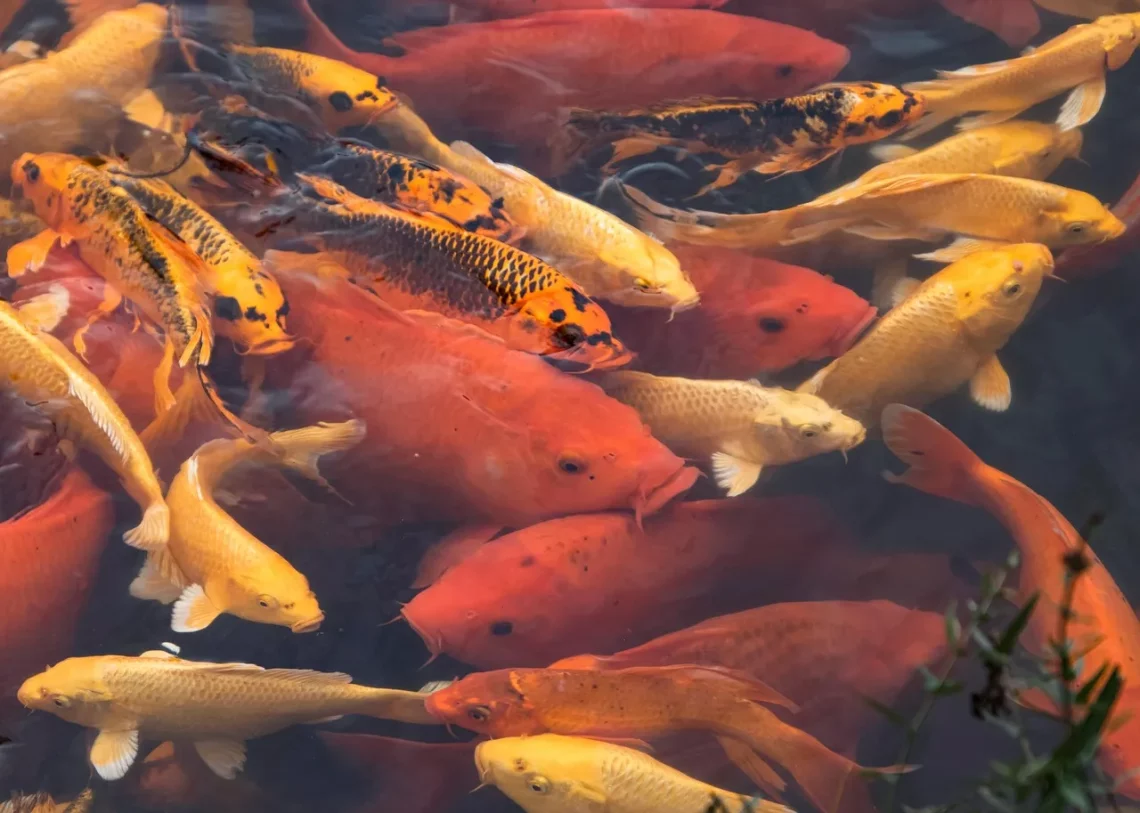
How Long Can Fish Survive Without Food in Their Environment?
Fish are fascinating creatures that inhabit a diverse range of aquatic environments, from tranquil freshwater lakes to the vast, mysterious oceans. Understanding their biology and behavior is crucial for both enthusiasts and researchers. One of the key aspects of fish life is their feeding habits, which can vary widely across species. However, there may come a time when these creatures face food scarcity, whether due to environmental changes, overpopulation, or other factors. The ability of fish to endure periods without food is a topic that not only intrigues aquarists but also raises questions about their resilience and adaptability.
Fish, like all living organisms, require energy to survive. This energy is primarily derived from their diet, consisting of various types of food such as algae, insects, smaller fish, and plant matter, depending on the species. When food becomes scarce, it is essential to understand how long fish can cope without sustenance and the physiological changes they undergo during such times. This knowledge is vital for aquarium keepers who aim to maintain the health of their aquatic pets, as well as for conservationists working to protect fish populations in the wild.
In this exploration, we will delve into the survival strategies of fish in the absence of food, the factors that influence their ability to endure fasting, and the implications for both wild and captive fish.
Understanding Fish Metabolism
Fish metabolism plays a critical role in determining how long these creatures can survive without food. Metabolism refers to the biochemical processes that occur within an organism to maintain life, including the conversion of food into energy. In fish, metabolic rates can vary significantly based on several factors, including species, size, age, water temperature, and activity level.
Generally speaking, smaller fish tend to have higher metabolic rates than larger ones. For instance, a tiny tropical fish may require more frequent feeding than a larger species like a catfish. Additionally, fish that inhabit warmer waters often have faster metabolisms compared to those in colder environments. This is because temperature influences metabolic processes; warmer temperatures generally increase enzyme activity, leading to higher energy expenditure.
When food is scarce, fish may enter a state of metabolic adjustment. They can lower their metabolic rate to conserve energy, which allows them to survive longer without food. This adaptive mechanism is crucial, particularly during adverse conditions. For example, many fish species can utilize stored energy reserves in the form of fat and glycogen when food becomes unavailable.
This ability to utilize stored energy varies among fish species and is influenced by their natural habitats. Fish that are adapted to environments where food availability fluctuates, such as seasonal rivers or lakes, often have more pronounced energy storage capabilities. In contrast, species that thrive in consistently abundant environments may not exhibit the same level of adaptation.
In summary, understanding the metabolic processes in fish helps us appreciate their remarkable resilience. While the duration that fish can survive without food varies, knowing the factors at play can provide insights into their survival strategies in changing environments.
Factors Influencing Survival Without Food
Several factors influence how long fish can survive without food, and these can be broadly categorized into environmental and biological aspects.
Environmental factors include water temperature, oxygen levels, and the availability of natural cover. For example, fish in warmer waters may deplete their energy reserves more quickly than those in cooler environments. Similarly, water with low oxygen levels can stress fish, further complicating their ability to survive fasting periods.
Biological factors encompass the species-specific traits that dictate feeding habits and energy utilization. For instance, carnivorous fish typically require more frequent feeding compared to herbivorous species. This is due to the higher energy costs associated with hunting and digesting other animals. Additionally, age and health status play a significant role; younger fish may have less developed energy reserves than mature adults, making them more vulnerable during food shortages.
Behavioral adaptations also come into play. Some fish can reduce their activity levels significantly when food is scarce, minimizing energy expenditure. Others may display foraging behaviors that allow them to seek out food more efficiently when it is available.
Stress can also influence a fish’s ability to withstand periods without food. Fish under stress—whether from poor water quality, overcrowding, or aggressive tank mates—may have compromised health, making them less able to cope with fasting. Therefore, maintaining a stable and healthy environment is crucial for the overall well-being of aquarium fish.
In conclusion, the interplay between environmental and biological factors greatly affects how long fish can survive without food. Understanding these influences can help aquarists and conservationists make informed decisions regarding fish care and habitat management.
Species-Specific Survival Strategies
Different fish species exhibit unique survival strategies when faced with food scarcity. These strategies are often a result of evolutionary adaptations that enable them to thrive in specific environments.
For instance, many species of goldfish can survive for extended periods without food, thanks to their ability to slow down their metabolism and utilize stored energy. Goldfish are known to be resilient, often enduring weeks without food under suitable conditions. Their ability to survive fasting is partly due to their natural habitat, where food availability can fluctuate based on seasonal changes.
In contrast, species like the Betta fish may have a shorter survival window without food. Bettas are carnivorous and have evolved to require regular feeding to maintain their health and energy levels. They may survive a few days without food, but prolonged fasting can lead to significant health issues, including weakened immune systems and stunted growth.
Another interesting example is the ability of some fish species, such as catfish, to survive in low-food environments by adopting a more opportunistic feeding strategy. Catfish are scavengers and can consume a wide range of organic matter, which allows them to thrive in diverse conditions, even when their preferred food sources are scarce.
Moreover, some species have developed unique adaptations that enable them to survive in extreme environments. For example, certain types of Antarctic icefish can endure long periods without food due to their specialized physiological traits, such as unique blood properties that allow for efficient oxygen transport in cold, oxygen-rich waters.
These species-specific strategies highlight the incredible adaptability of fish in the face of food scarcity. Understanding these differences is essential for aquarium keepers, as it informs feeding practices and care requirements tailored to the needs of individual species.
Implications for Aquarists and Conservationists
The ability of fish to survive without food has significant implications for both aquarists and conservationists. For aquarium enthusiasts, understanding how long fish can go without feeding is crucial for maintaining healthy aquatic environments. It allows them to make informed decisions about feeding schedules and the overall care of their fish.
Aquarists should be mindful of the specific dietary requirements of their fish species. Providing a balanced diet that meets their nutritional needs is essential for their health and longevity. Moreover, understanding the signs of stress and malnourishment can help aquarium keepers take timely action to address any issues that may arise.
On a broader scale, conservationists can apply insights into fish survival strategies to better protect wild populations. By understanding the factors that influence fish health and resilience, conservation efforts can be tailored to address food scarcity caused by habitat degradation, pollution, and overfishing.
Efforts to restore natural habitats and ensure sustainable fishing practices are vital for maintaining healthy fish populations. Additionally, educating the public about the importance of preserving aquatic ecosystems can foster a greater appreciation for the delicate balance of life in our waters.
In conclusion, the ability of fish to survive without food is a complex interplay of metabolic processes, environmental conditions, and species-specific adaptations. By understanding these dynamics, aquarists and conservationists can work towards better care practices and effective strategies for protecting fish in the wild.
This article is for informational purposes only and does not constitute medical advice. Always consult a healthcare professional for any health-related concerns.




